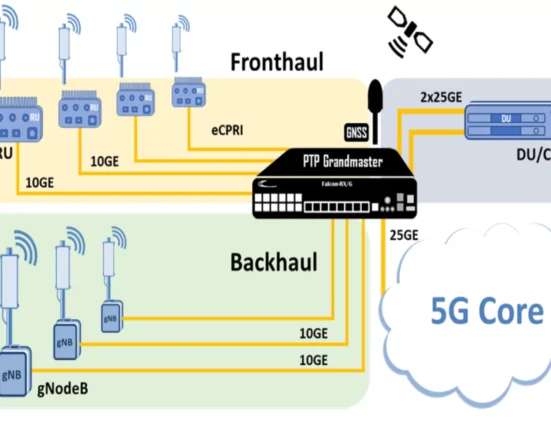A water treatment plant is a critical infrastructure that always needs to be protected. There are various kinds of threats that we can protect water systems from. One of the threats that not everyone thinks can affect water systems is cybersecurity, which has become rampant.
There are various ways cybersecurity can impact water systems. And there is a need to understand how water utilities can be affected and the best practices that can help you keep them safe. This article will explore everything you should know about this subject.
Let’s get started with it.
Why Do Water Treatment Facilities Need Cybersecurity?
It will help to start by pointing out why cybersecurity matters in water treatment plants. There are three reasons for conducting vulnerability management and implementing data security on water systems. This section will explore why cybersecurity in water systems matters.
Here are some of these reasons:
1. The Industry Is a Fairly Easy Target
Do you ever anticipate a cyberattack on a water treatment plant? Well, not everyone does unless they have had their systems attacked before. The fact that we don’t suspect that our water systems might be attacked makes these plants an easy target for cyberattackers.
There’s been an elevated risk of attacks on water systems recently. It has not been easy to secure water systems at the industry or federal government levels. With over 50,000 community water systems in the US, conducting a good assessment has become a tall order.
2. Vulnerabilities Have Been Worrying
There are different cyberattacks on water treatment plants that have been reported in the past. And the issues that these cyberattacks might have already caused have greatly impacted the water treatment systems. For instance, one attack in Florida stood out.
It got wide media attention because of the potential impact it could have had on the state. As per the evidence gathered, this attack increased chemical levels in a water treatment plant. It could have had serious consequences for the residents, such as poisoning, if the authorities had not acted quickly.
3. Hackers Can Lock Out Your Employees
Cybercriminals can impact water systems in a wide range of ways. You might be protecting your water systems from tampering that could make the water toxic for users. However, the cybercriminals might have different plans, including locking out your employees.
They could prevent them from accessing critical infrastructure and instead take control. This could make it possible for them to disrupt water supply, quality, and access important data. It is one reason to consider investing in OT security tools as well as data security systems.
How to Protect Water Systems From Cyber Security Malware

We have explored the main reasons to protect your water systems from cybersecurity issues. Next, we will need to look at how you can protect these systems. You should know the cybersecurity solutions that will help lock out cybercriminals from your water systems.
Besides, you should know some of the best practices that will help secure your systems. It will be easier to keep these systems safer if you have such an all-encompassing effort to combat it. The rest of this article will explain how you can get past cybersecurity challenges.
Here’s what you should do:
1. Adopt a “Zero Trust” Approach
This is one of the things you must do to ensure your water systems remain safe. Adopting a “zero trust” approach will help ensure that you reduce the potential of a cyberattack by a great percentage. Enforcing the principle of least privilege and adequately verifying identity before granting access
2. Educate Your Employees
You cannot ensure cybersecurity by working as an individual. You need the help of the rest of your team to ensure that you secure your systems. Thus, you should start by training them on cybersecurity. Ensure that they know how to use various cybersecurity solutions.
3. Secure Entry Points
There are various possible entry points that cybercriminals can use to get into your systems. It is vital to ensure that you identify and secure these entry points. That will make it easy to minimize the potential of an attack. You can use a wide range of tools to secure entry points.
There are several options that you can consider when looking to secure your systems. It is critical to consider what you can do with everything we have shared above. You can make a priority list of what to implement first and what will wait to be implemented later.
Implementing these insights one after another will help make the whole process less daunting. It will also make it easier to reduce the cost of securing your water systems. In the end, you can ensure that you get the desired results even with minimal efforts.
Potential Outcomes of Cyberattacks on Water Systems
There are various outcomes that might come up as a result of cyberattacks. It is vital to know some of them since it will make it easier to keep yourself safe from these attacks. In this section, we will explore some of the things to expect in the event of a successful cyberattack.
They include:
- Disruption of water supply and operations in a water plant.
- Despite treatment, water quality is poor.
- Potential damage to infrastructure, which can become costly,
- Threats to the safety of your employees
- Components like valves and pumps might not end up working as expected.
Those are some of the potential issues that might arise because of a cyberattack. If you are looking to secure your water systems, then knowing these consequences might help. It will make it easier to know why you need to invest and even hire an OT security vendor.
Conclusion
Protecting water systems from cybersecurity challenges is important. As we stated before, most people do not consider water systems vulnerable to cyberattacks. Thus, they don’t put in the best effort to conduct security assessments and protect these systems from attacks.
This article has explored everything you should know about protecting water systems from cyberattacks. Getting started with protecting water systems from cyber attacks can never be easier. You can now do it effortlessly by following the insights we have shared in this post.






